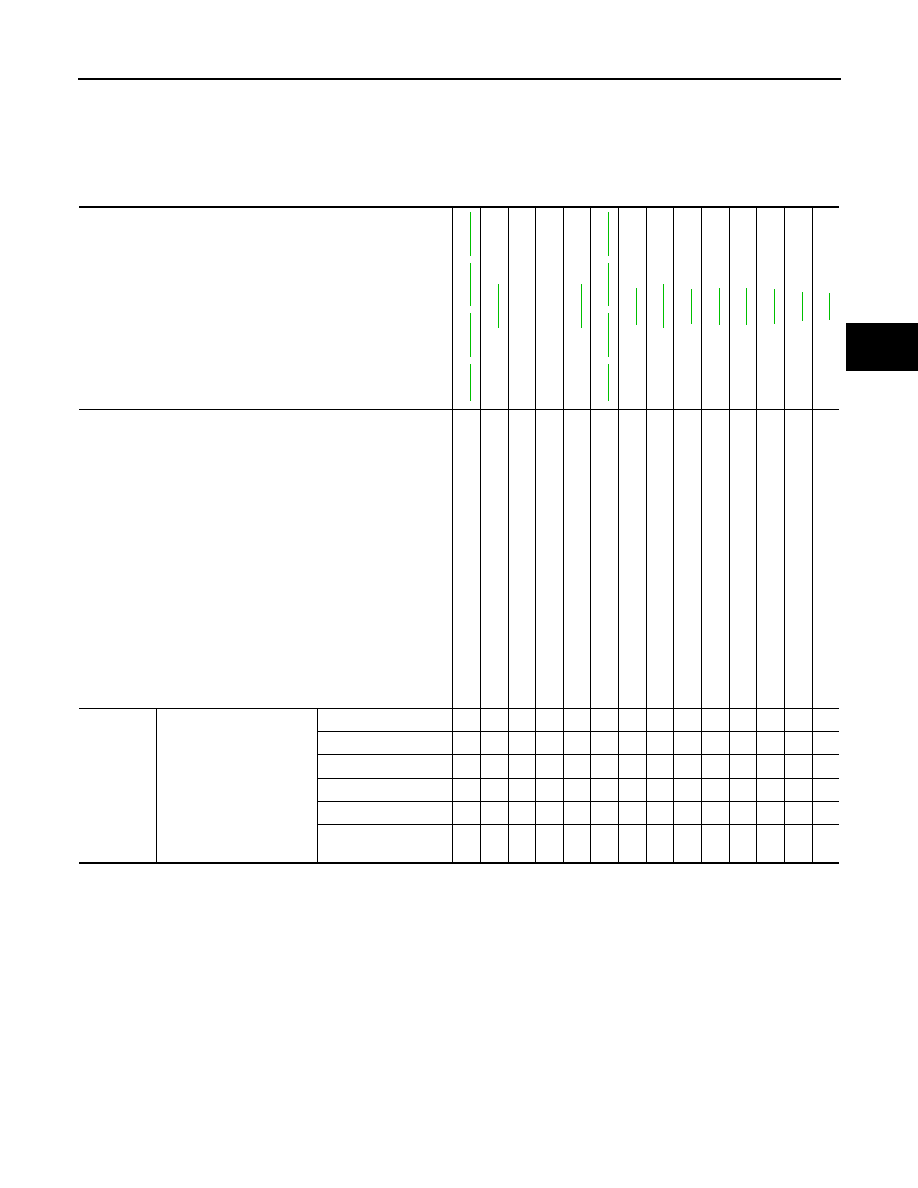Nissan Versa Note. Manual - part 457

NOISE, VIBRATION AND HARSHNESS (NVH) TROUBLESHOOTING
FSU-5
< SYMPTOM DIAGNOSIS >
C
D
F
G
H
I
J
K
L
M
A
B
FSU
N
O
P
SYMPTOM DIAGNOSIS
NOISE, VIBRATION AND HARSHNESS (NVH) TROUBLESHOOTING
NVH Troubleshooting Chart
INFOID:0000000009561120
Use chart below to find the cause of the symptom. If necessary, repair or replace these parts.
×: Applicable
Reference
,
,
,
—
—
,
,
,
Possible cause and SUSPECTED PARTS
Imp
rop
er i
ns
ta
lla
tio
n,
lo
os
en
es
s
Sh
oc
k ab
so
rbe
r
de
form
a
tio
n, dam
a
ge or
d
ef
lec
tion
Bus
h
in
g or mo
un
t de
te
rio
ra
tio
n
Part
s interf
erence
S
p
rin
g f
ati
gu
e
Su
sp
en
si
on
lo
os
en
es
s
In
co
rrec
t wh
ee
l a
lig
nm
en
t
S
tab
ili
ze
r ba
r fa
tig
ue
FRONT A
XLE
TI
RE
ROAD
WHEEL
DRIVE SHAFT
BRAKE
STE
E
RING
Symptom
FRONT SUSPENSION
Noise
×
×
×
×
×
×
×
×
×
×
×
×
Shake
×
×
×
×
×
×
×
×
×
×
×
Vibration
×
×
×
×
×
×
×
×
×
Shimmy
×
×
×
×
×
×
×
×
×
×
Shudder
×
×
×
×
×
×
×
×
Poor quality ride or
handling
×
×
×
×
×
×
×
×
×
×